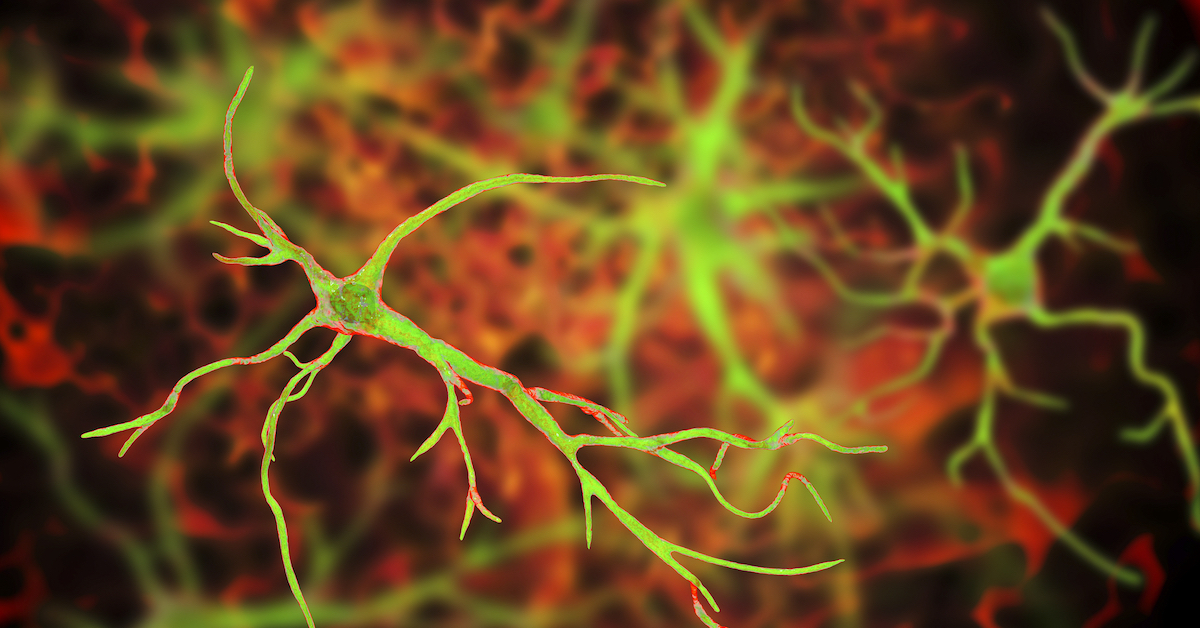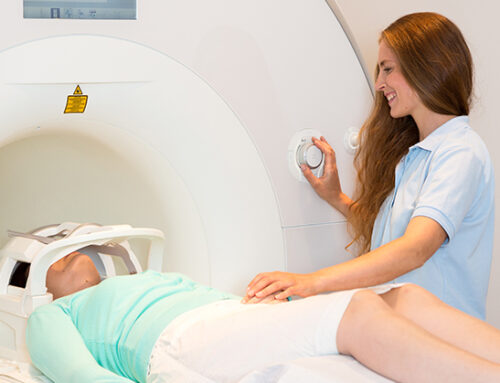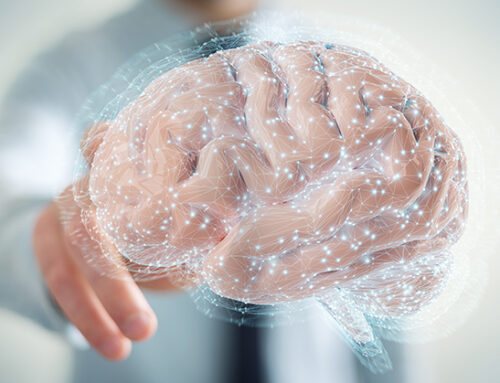Although neuroscientists have spent most of their research efforts investigating how the brain’s neurons affect memory, they recently discovered another type of cell in the brain that’s just as vital for our intellectual abilities.
They’re called glial cells, and new research reveals they’re essential for making long-term memories. In fact, the latest research shows that your overall memory would be lost without them.
It’s not that neuroscientists didn’t know about glial cells – they’ve known for years – but they always considered them “support” cells in the brain. Now they’ve learned there’s a lot more to it than that.
Glial cells roam the brain and apply myelin sheathing to neurons. This sheath is like a coat of insulation that speeds the transmission of the impulses that travel from neuron to neuron.
In diseases such as multiple sclerosis, the myelin sheath is damaged and brain cells can’t send and receive messages. As a result, your muscles weaken to the point of paralysis.
Glial cells have another important job. They provide protection to neurons, guarding them against oxidative stress and supporting healthy function.
In Alzheimer’s disease, recent research suggests that when glial cells fail to protect neurons, memory loss progresses. While this study used animal models, researchers believe the same will hold true for humans.
Recently, other scientific studies show that glial cells also help you maintain a clear, sharp memory.
Glial Cells Support Memory Formation While You Sleep
Lab tests at the University of Toronto in Canada show that forming long term memories while you sleep requires the efforts of specialized glial cells called oligodendrocytes.
These cells create a steady supply of myelin sheathing around the projecting threads from neurons– structures called axons– that pass on transmissions to other neurons. The myelin sheath allows neurons to transmit their signals through axons to other neurons up to 50 times faster. Without this myelination of axons, your memory would be as slow, creaky and dysfunctional as an Internet dial-up connection! (I shudder to remember those.)
And there’s more…
The Canadian researchers report that during sleep, the glial cells enable different parts of the brain to oscillate together, in coordinated brain waves. And the researchers conclude that when these oscillations are matched up between an area like the hippocampus (an important memory center) and the prefrontal cortex (linked to decision making and social behavior), long term memories are cemented in the brain for later retrieval.1
“When we think about how memories are consolidated, traditionally we have always thought about synaptic plasticity (changes in the connections among neurons),” says researcher Paul Frankland. “Our findings suggest that an entirely distinct form of plasticity [myelin plasticity] also plays a critical role in consolidating memories.”
This is one reason good, quality sleep is so essential to brain health, and why poor sleep contributes to the onset of dementia.
Brain Stimulation
In addition to these investigations, researchers are now also looking closely into how electrically stimulating the brain with implants affects the behavior and activities of the brain’s glial cells.
According to scientists at the University of Michigan, while there’s been an impressive degree of success at treating brain problems like the tremor of Parkinson’s with deep brain stimulation as well as treating obsessive compulsive disorder, Tourette’s syndrome and even some cases of blindness and deafness, no one really knows exactly how or why the stimulation works.
And the Michigan researchers say until we understand how glial cells respond to the stimulation, we won’t be able to explain the actions of this therapy or how to design it better.2
While it’s known that glial cells called astrocytes gather on implants and cover them once they’re in the brain, it was thought that this was a mere nuisance that meant the implants had to put out stronger current to influence the brain’s neurons. But now it’s become obvious that the astrocytes and other glial cells frequently do things in response to the implants that, in some cases, may improve their benefits. So, as studies go forward, the Michigan researchers explain that it will be crucial to better understand how glial cells behave as electrical impulses are applied to brain tissue.
Fixing the Spinal Cord
Meanwhile, researchers in Asia believe glial cells may be the key to restoring feeling and movement after somebody suffers a serious spinal cord injury. These scientists say their tests show that with the use of gene therapy, astrocyte glial cells in the spinal cord may be coaxed into forming new neurons that bridge the injury.3
So far, these tests have only been performed in lab animals, but the studies show that new neurons can be grown with the use of astrocytes even after scar tissue has formed in the spinal cord. If this research continues successfully, it could be a ground-breaking discovery in treating people confined to wheelchairs due to spinal cord injuries.
Controlling Hunger Signals
On a final note, research is showing how glial cells play a central role in the brain in regulating how hungry we feel and how we respond to the food we eat.
An investigation at the University of Warwick in England focuses on glial cells called tanycytes, located in the center of the brain on the lining of fluid-filled spaces called ventricles. Tanycytes are able to recognize the nutrients in the food we consume and communicate the information to the brain’s neurons.4
It turns out that some of the nutrients we digest are shuffled into the cerebrospinal fluid in the ventricles where the tanycytes use specialized taste bud receptors to detect their presence. When that happens, they pass this information on to neurons.
The researchers say they still don’t completely understand how tanycytes influence how much we eat, but when they’re activated in a certain way, it leads to consuming larger amounts of food.
Glial cells are clearly critical to healthy brain and nervous system function. I have no doubt the research will continue into their many jobs in the human body. Certainly, as studies reveal new discoveries about glial cells and your brain, I’ll keep you informed of the findings.







